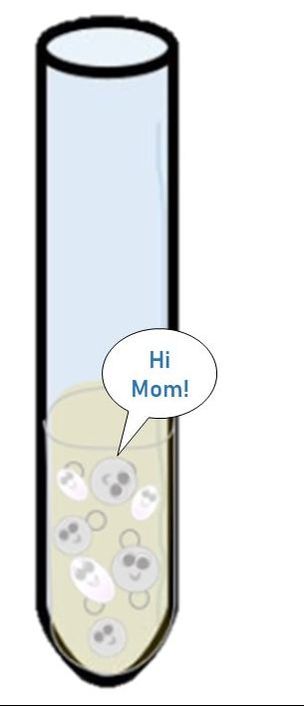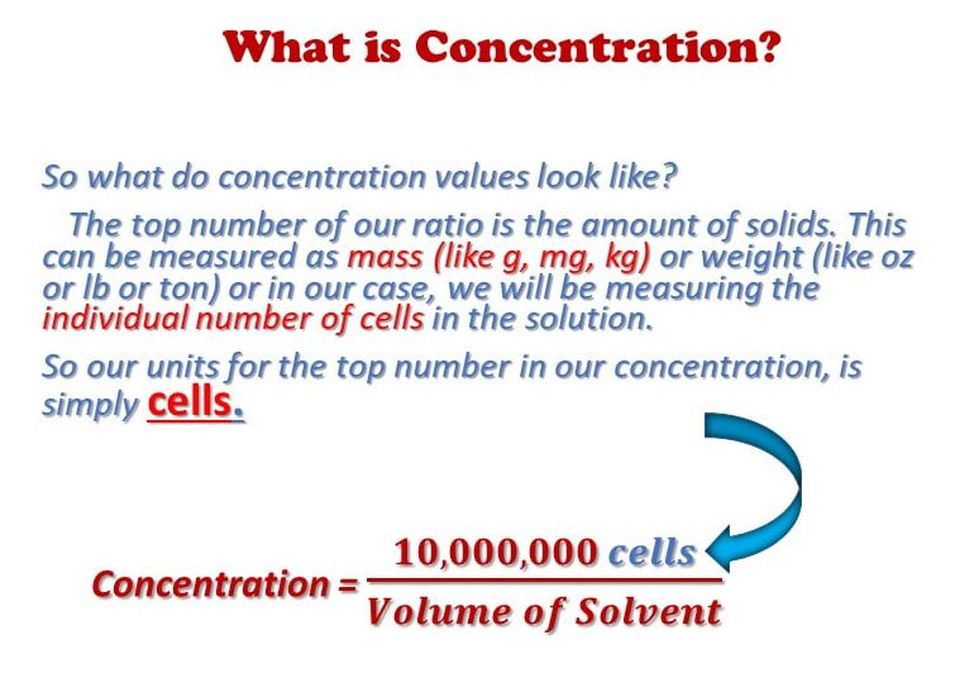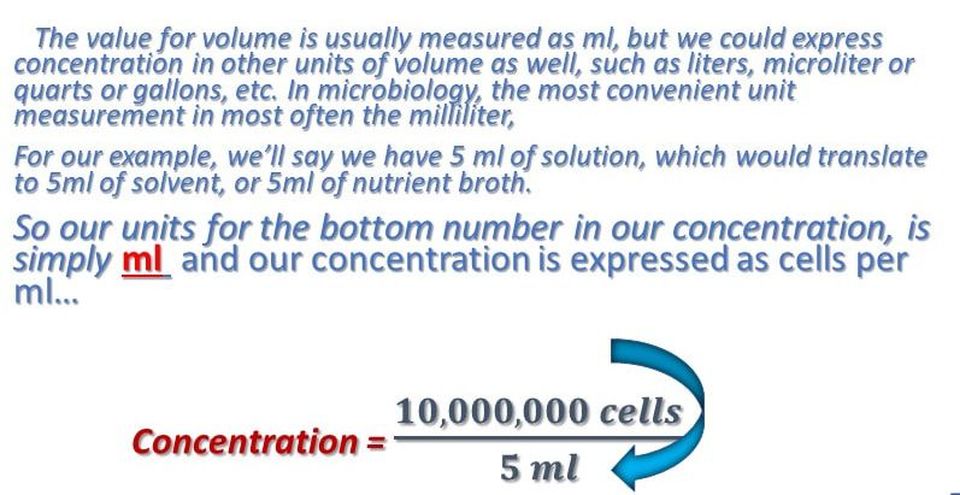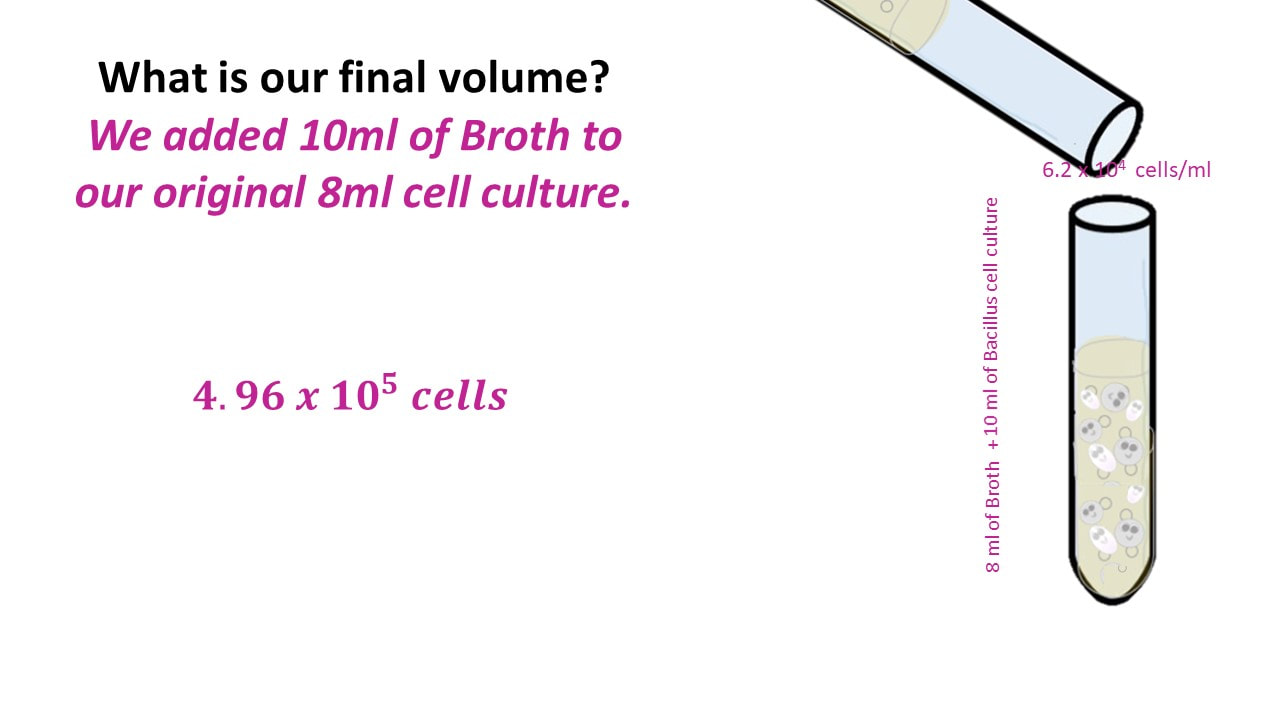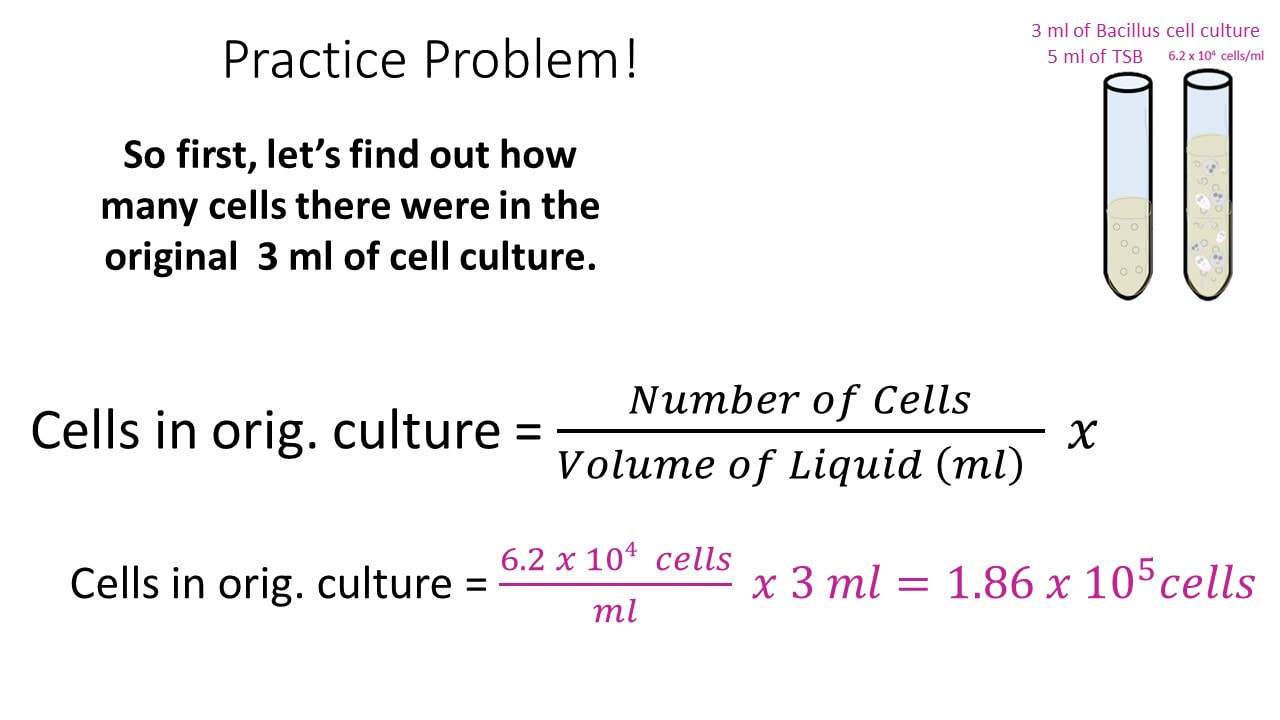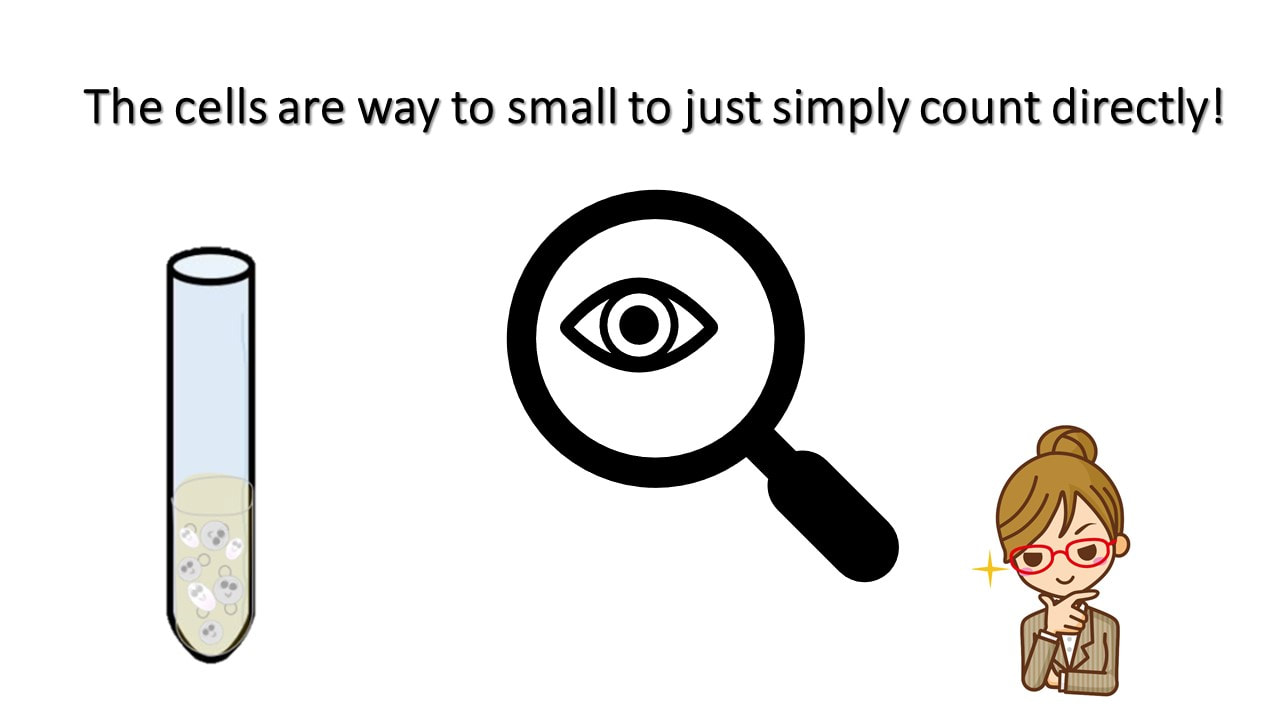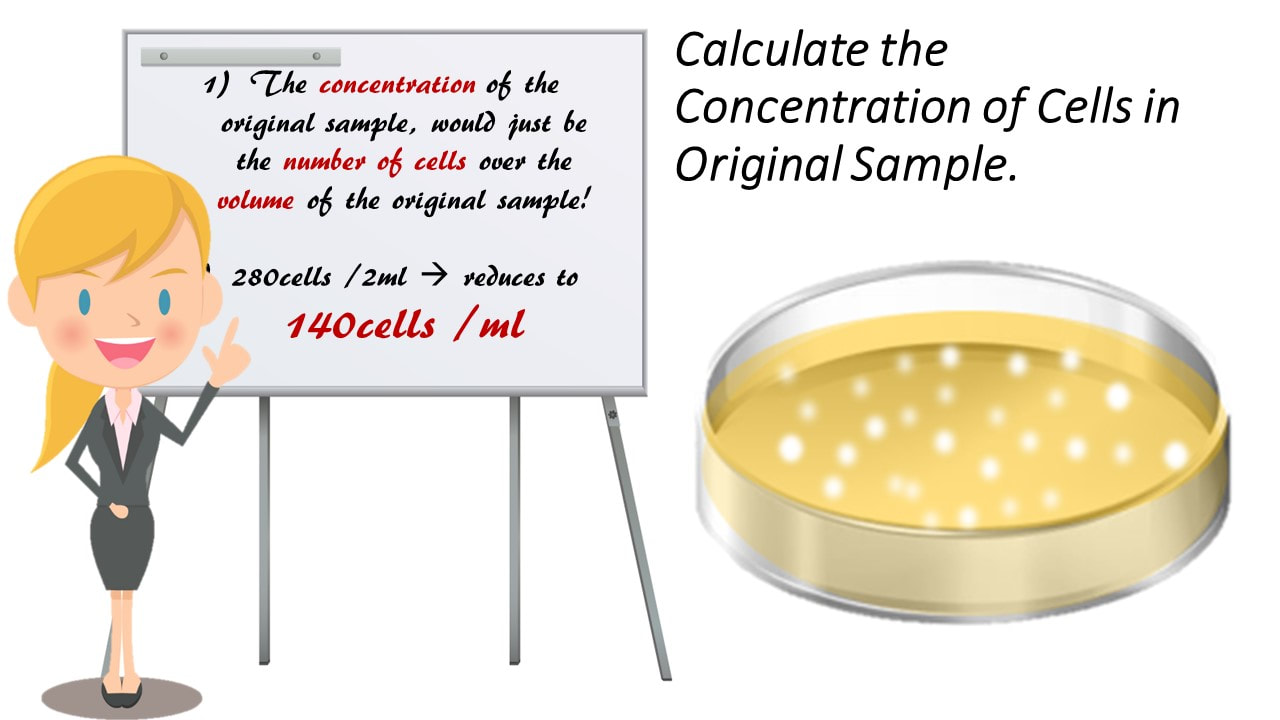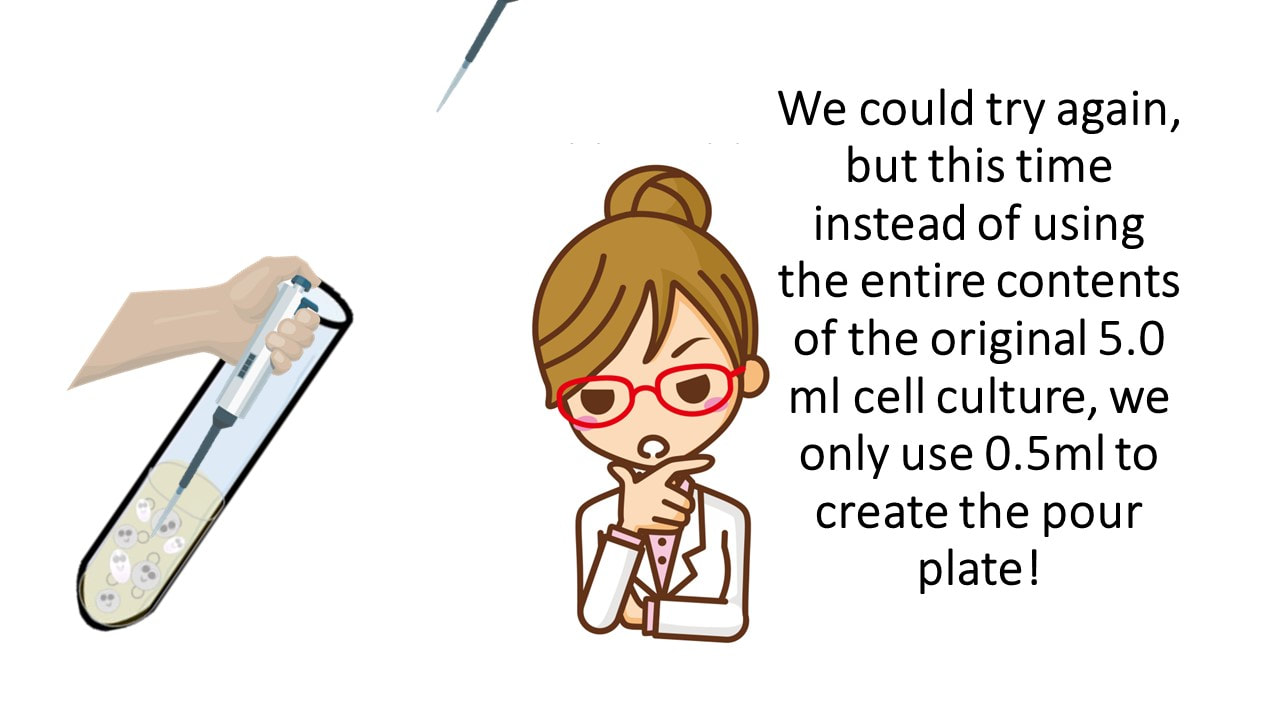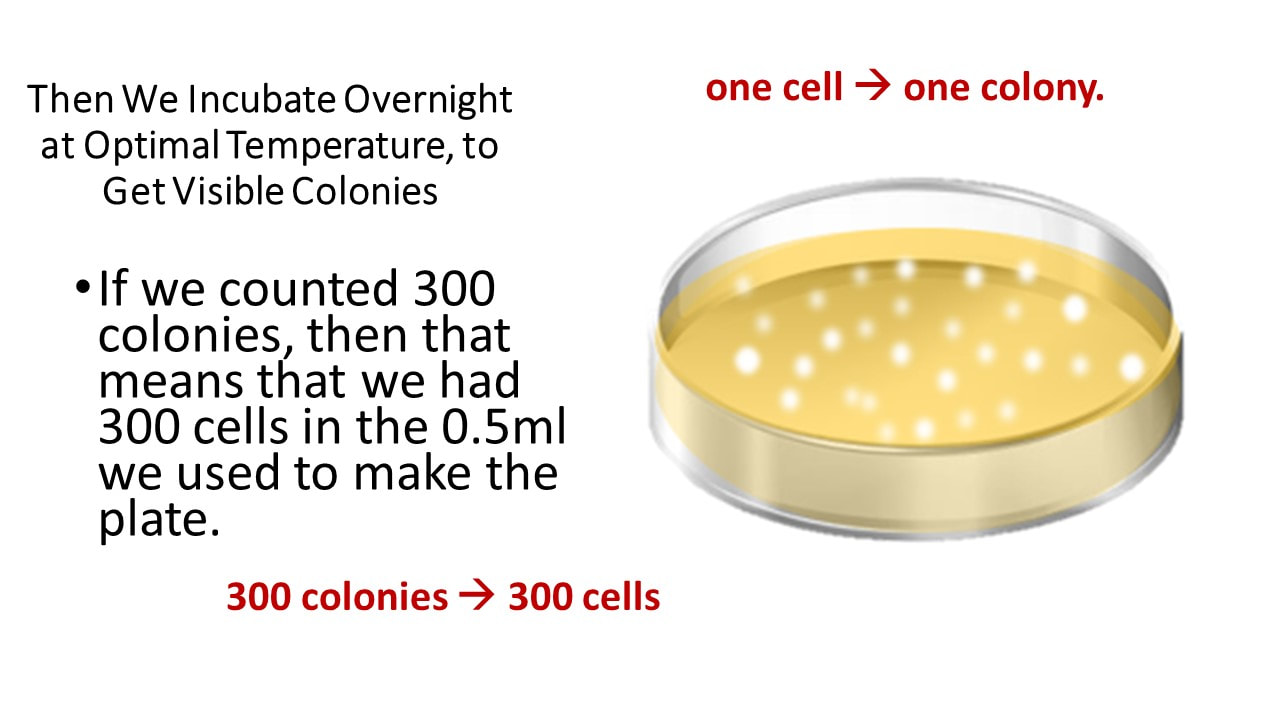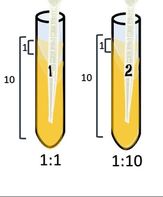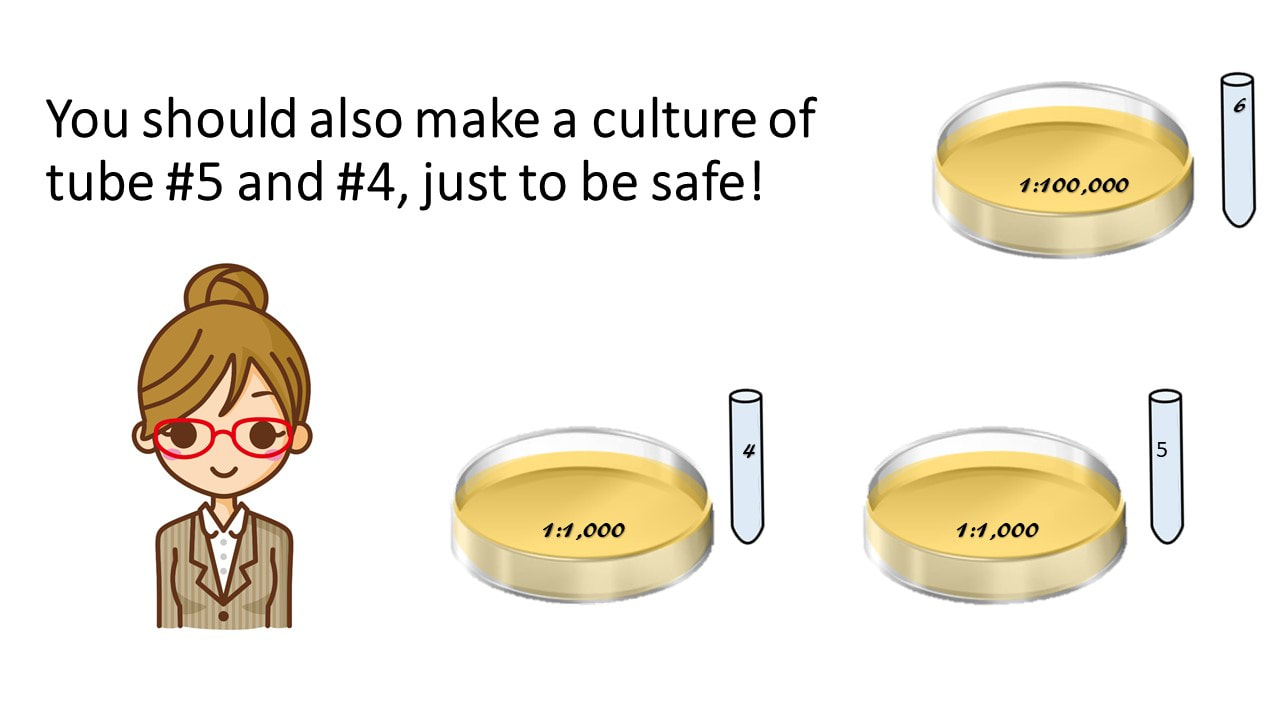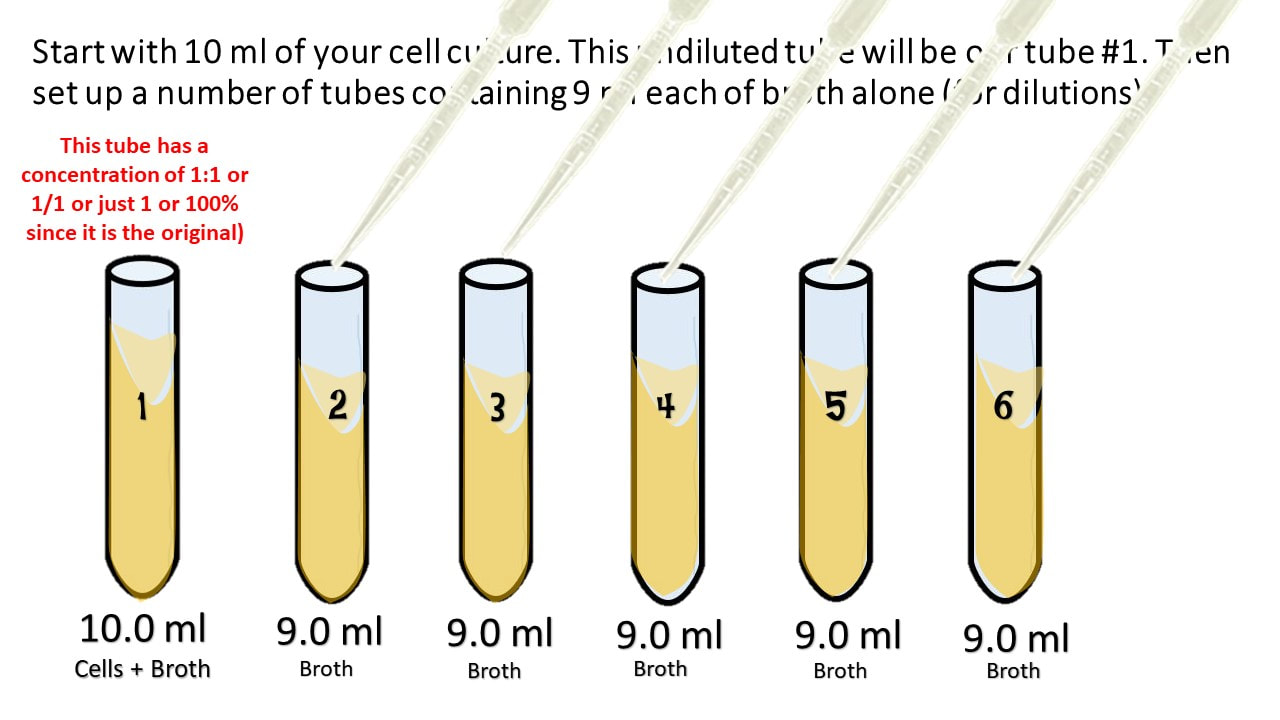Dilution Series and Calculations
CLICK BELOW TO WATCH THE VIDEO!!!
Scientific Notation
In microbiology, it is convenient to use scientific notation, because we are often dealing with huge numbers of cells.
- Round the number so you only have 3 “non-zero” digits. This is a good rule of thumb, unless the directions or your instructor says otherwise.
- Then, put a decimal point after the first digit!
- Count the number spaces you have after the decimal point.
- Now we get rid of all those zeros and add the notation “ (x 10) ”.
- The exponent on the 10, will simply be the number of spaces we had after the decimal point, which in our example was 12.
This works for small numbers too!
- We just count the number of zeros that come AFTER the decimal point, and use a negative sign for our exponent...
Concentration Practice Problem #1
Let’s say we have a Bacillus cell culture with a concentration of 6.2 x 10^4 cells/ml.
If I have 3 ml of the Bacillus cell culture and add 5 ml of TSB (nutrient broth) to the cell culture, what is my final concentration
If I have 3 ml of the Bacillus cell culture and add 5 ml of TSB (nutrient broth) to the cell culture, what is my final concentration
Concentration Practice Problem #2

What would our concentration be if we took an 8 ml cell culture of bacillus and we added 10 ml of TSB broth? The cell culture has a concentration of 6.2 x 10^4 cells/ml.
Once we have the number of cells, we get the final concentration, by dividing the number of cells by the final volume.
Once we have the number of cells, we get the final concentration, by dividing the number of cells by the final volume.
How do we count cells in culture?
The cells are way too small to just simply count directly!
BUT... If the culture was dilute enough, we could just mix our entire sample with warm agar..
BUT... If the culture was dilute enough, we could just mix our entire sample with warm agar..
And Then Incubate Overnight at Optimal Temperature, to Get Visible Colonies
We know one cell will yield one colony.
We know one cell will yield one colony.
Calculate How Many Cells There Were in the Original Sample?
Calculate the Concentration of Cells in Original Sample.?
BUT…. Here’s the problem! There can be millions of cells in a single drop! So, doing this is the without a serial dilution, will give you something more like…..
We could try again, but this time instead of using the entire contents of the original 5.0 ml cell culture, we only use 0.5 ml to create the pour plate!
We’ll take 0.5ml of our original cell culture, and mix with warm TSA (trypsin Soy Agar) to make sure there are enough nutrients… And make our plate with only 0.5ml of the original culture!
Then We Incubate Overnight at Optimal Temperature, to Get Visible Colonies
If we counted 300 colonies, then that means that we had 300 cells in the 0.5ml we used to make the plate.
If we counted 300 colonies, then that means that we had 300 cells in the 0.5ml we used to make the plate.
Calculate the Concentration of Cells in Original Sample.?

Calculate How Many Cells There Were in the Original Sample?
BUT…. 99.9% of the time, even with using this smaller amount, you‘ll something more like…..
All of our previous ideas will work, once we get a sample of our cell culture that is dilute enough to yield between 30 and 300 colonies on a Petri plate/dish.
What if we did this same idea again, and just kept track of the volume?
We’ll Use Numbers that are Super Easy to Work With!
We’ll Use Numbers that are Super Easy to Work With!
Setting up a serial dilution!
1:10
AND SO ON! |
It doesn't really matter how many dilutions you do, but you want to make sure you do enough dilutions and make enough culture plates so that you won't waste time having to repeat the experiment, in case your plates end up having too many colonies!
After you've made your serial dilutions, you will want to make some pour plates using a few of the most dilute concentrations from the series.
- Make sure to label your Petri dish with the dilution you used!
- Create Each Pour Plate Separately by Adding the Entire Contents of the Diluted Cell Culture to Warm TSA (Nutrient Agar) in a Petri Dish.
- Incubate Overnight at Optimal Temperature (You should check what the optimal temperature for growth is for your organism).
- Following the incubation, inspect the pour plates and discern which of the plates contains between 30 and 300 colonies. This is the plate we will want to use!
- Carefully count the colonies on the plate having between 30 and 300 colonies.
- Record the number of colonies on the plate
- Record the dilution factor that was used for that plate that was counted.
- Now, calculate the number of cells in the original 1 : 1 undiluted cell culture, by multiplying (the # of colonies you counted) by (the reciprocal dilution factor).
- Here's what's going on. One progenitor cell or parent cell or culture-forming unit (CFU) will yield one single colony. So counting the colonies that grew on our plate, gives us our cell count for our diluted cell culture.
We know what our dilution factor was that we used to make the plate.
Calculate the Number of Cells in Original Sample.
What is the concentration of a cell culture that grew 79 colonies on a Petri dish at a dilution of 1 : 100?
What is the concentration of a cell culture that was able to grow 28 colonies using only 0.1 ml of a 1:10,000 dilution sample?
HOW TO SET UP A 3-FOLD DILUTION!
Setting up a serial dilution!
1:3
AND SO ON! |
QUESTION: Prepare a serial dilution to 1,000,000.
SHORT CUT :There are 6 zeros in 1,000,000, so you’ll dilute it 6 times!
SHORT CUT :There are 6 zeros in 1,000,000, so you’ll dilute it 6 times!
|
MATH CHEAT SHEET!
MATH CHEAT SHEET! 10^-1 = 0.1 = 1/10 10^-2 = 0.01 = 1/100 10^-3 = 0.001 = 1/1000 10^-4 = 0.0001 = 1/10000 10^-5 = 0.00001 = 1/100000 10^-6 = 0.000001 = 1/1000000 10^-7 = 0.0000001 = 1/10000000 10^-8 = 0.00000001 = 1/100000000 10^-9 = 0.000000001 = 1/1000000000 |
|


